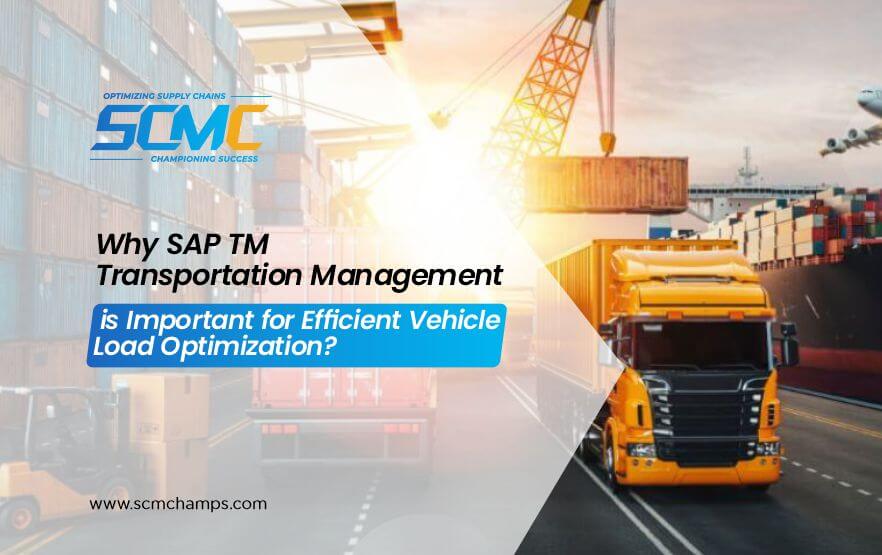
SAP Transportation Management for Efficient Vehicle Load Planning and Optimization
SAP Transportation Management (SAP TM) is transforming the transportation planning process for supply chain-intensive businesses. In today’s challenging business climate, with rising inflation and fuel costs, it is crucial for SAP-run businesses to pursue transformational activities to drive revenue and profitability. With the help of SAP TM, businesses can optimize the use of available resources and react quickly to transportation events, ensuring customer satisfaction.
Optimize Cost and Resource Utilization
SAP TM helps businesses determine the most cost-effective and efficient way to transport goods, even in last-minute scenarios. It allows businesses to quickly find solutions to deviations from the original transportation plans, ensuring optimal resource utilization.
Proactive Decision Making
The ability to make quick and proactive decisions is key to the survival of any business. With SAP TM, businesses can consider the weight and cubes of their deliveries across a fleet of vehicles with varying constraints at the click of a button. This ensures minimal cost and carbon impact, saving valuable time and resources.
Seamless Automation
Human intervention can often impact upstream processes, causing delays and inefficiencies. SAP TM provides seamless automation, enabling businesses to optimally plan for new volumes and incrementally adjust existing plans without disrupting wider operations.
What Do I Require to Get Started and How Does the Solution Function?
SAP Transportation Management (SAP TM) offers an integrated optimization engine, allowing for the automation of vehicle scheduling, routing, and load planning. By ensuring proper master data maintenance, businesses can seamlessly integrate the solution into their operations, simplifying and streamlining the process.
a) Standalone or Integrated Solutions
SAP TM can run as a standalone solution or in conjunction with SAP EWM. Central integrated programs in the background of the system allow both transportation and extended warehouse management to utilize shared master data and rulesets, aligning processes and optimizing resource utilization.
b) Automated Load Planning and Optimization
As orders are sent to transport management for planning, the system packages and palletizes them while optimizing product fill into boxes or cartons before palletizing. The system then considers if the product is compatible with mixing along with any package, weight, or customer-specific constraints. Load optimization takes into consideration not only the package and load-building constraints but also specific customer constraints.
c) Pre-set Rules for Standardized Processes
Specific rules are pre-set within master data standardizing the process for every load created. These include vehicle sizes/availability, booking time windows, incompatibilities, loading constraints, carrier ranking, delivery performance, and product, package, and pallet information.
What are the Key Factors Considered in Creating an Optimized Plan for Transportation Management?
Optimized plans play a crucial role in efficient load planning and transportation management. SAP Transportation Management (SAP TM) considers several factors while creating optimized plans to ensure businesses can manage their resources efficiently.
1. Resource Utilization
One of the primary factors considered in optimized plans is resource utilization. The system takes into account various resources such as containers, vehicles, and available capacity, ensuring optimal utilization of resources throughout the transportation process.
2. Constraints and Limitations
The system also considers several constraints and limitations, including weight capacity, height, width, and length restrictions. Additionally, internal and external dimensions, tare weight/gross weight, and axle weight limits are also taken into account.
3. Rulesets and Loading Patterns
SAP TM comes with a wide range of standard rulesets and loading patterns, enabling businesses to optimize loads according to their specific requirements. These rulesets include stacking height, loading order, and density, among others.
Check also: SAP Transportation Management Streamline Logistics for Improved Business Performance
Conclusion:
In conclusion, SAP Transportation Management streamlines the load planning and optimization process with automated solutions, standardized processes, optimized resource utilization, and seamless integration with Extended Warehouse Management. By using SAP Transportation Management, businesses can save time and resources and make better decisions.


